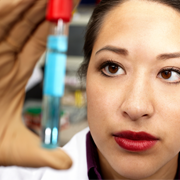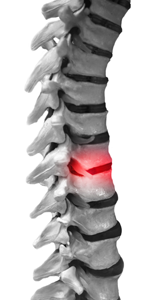Treating Bone Marrow Cancers Successfully

Bone Marrow Transplants have the potential to cure a range of bone marrow disorders and cancers. Here we explain how bone marrow works and what bone marrow transplants can do to help. If you would like to know more about how bone marrow and stem cell transplants could help you, we offer a free, no-obligation consultation to discuss how the procedure works and whether it may be applied to your condition or that of a loved one.
Stem Cells
Stem cells are immature cells which have not yet become specialized cells of a part of the body. They are, literally, a blank canvas and have the remarkable ability to turn into almost any other cell within the body. Stem cells can differentiate to become a specialized cell that can heal or repair damaged organs. They can also reproduce to create more healthy stem cells.
Bone Marrow
 Bone marrow is a sponge-like substance found inside bones. It contains millions of stem cells.
Bone marrow is a sponge-like substance found inside bones. It contains millions of stem cells.
There are two types of bone marrow; red bone marrow, which contains mainly hematopoietic tissue, and yellow marrow, which consists mainly of fat cells. At birth most of our bone marrow is red but as we age, more of it becomes yellow.
The stem cells in the hematopoietic tissue of the bone marrow turn into blood cells: white blood cells (leukocytes), including plasma cells to fight infections, red blood cells (erythrocytes) to carry oxygen around the body and carbon dioxide away from the body via the lungs, and platelets (thrombocytes), blood cell fragments that stick to each other, sealing cuts and breaks in blood vessels.
All blood cells die; red blood cells survive for around 120 days, platelets 6 days and white blood cells just a day. Hematopoietic tissue needs to keep a constant supply of new blood cells to replace the old and dying ones, so produces 500 million blood cells a day, which are carried out of the bone marrow via blood vessels. These blood vessels also act as a barrier, preventing immature blood cells from entering the blood.
What is Bone Marrow Transplant?
 By introducing healthy bone marrow cells to someone with failing bone marrow, the new cells stimulate healthy blood cell production and the creation of properly functioning bone marrow.
By introducing healthy bone marrow cells to someone with failing bone marrow, the new cells stimulate healthy blood cell production and the creation of properly functioning bone marrow.
If someone has a genetic or acquired bone marrow disease, or has bone marrow that has been damaged by chemotherapy and radiation treatment, it is possible to take hematopoietic stem cells from one person and give them to another person (known as an allogeneic transplant), or infuse them back into the same person at a later date (known as autologous treatment).
In cases where the transplant is used to treat a bone marrow disease, the existing bone marrow in the patient is first killed using chemotherapy or radiation therapy, enabling the new healthy cells to enter the bone marrow and reproduce without any chance of the old, unhealthy cells continuing to reproduce.
In cases where treatment for a solid cancer is likely to damage the bone marrow, healthy hematopoietic cells are taken from the patient and stored until after the cancer treatment, when they are reintroduced to the body to restore normal blood and immunity function.
Bone Marrow Disorders
There are a wide range of bone marrow diseases, which are either inherited or acquired. If a person has a bone marrow disease, it means that they have a problem with their bone marrow or the cells produced by the bone marrow. For example, leukaemia is a cancer where the white blood cells produced by the bone marrow are abnormal, and aplastic anaemia is an inherited or acquired condition where the bone marrow fails to make enough blood cells.
Another cause of failing bone marrow is chemotherapy and cancer treatment for solid cancers, such as breast and lung cancer. The treatment used to kill cancerous cells also kills or damages the cells within the bone marrow, meaning that production of the essential blood cells is inhibited.
For more information about bone marrow transplants from please contact us to speak to a medical professional.